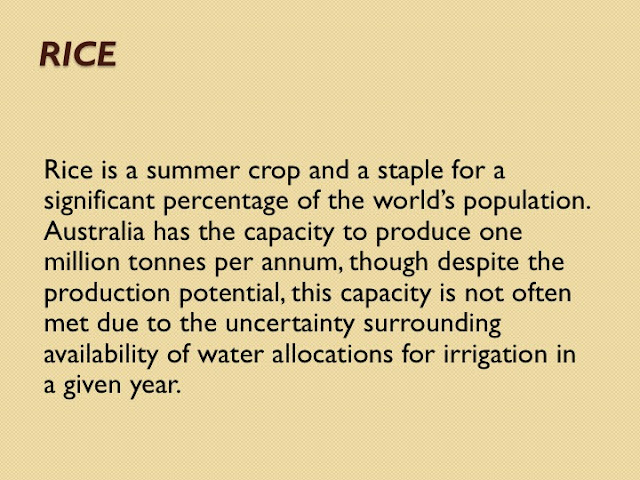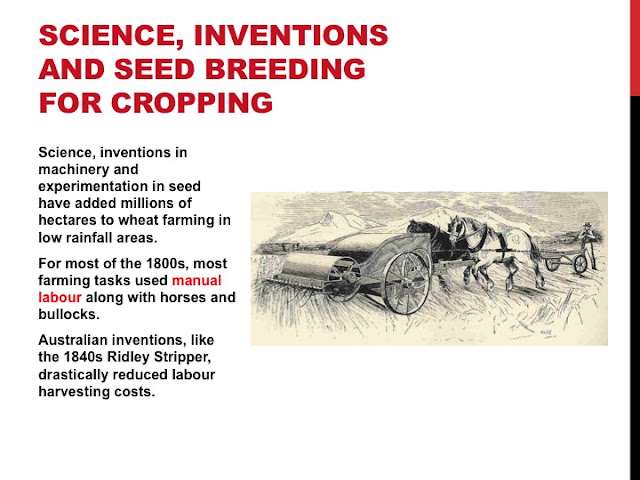THE GRAIN INDUSTRY
Australia's main grain growing regions
Geographically, the grains industry is defined by three broad agroecological regions.
The Northern Region
Encompassing Queensland and northern New South Wales, has generally high inherent soil fertility, although there is increasing evidence that this has been run down over time.
It has relatively high seasonal rainfall and production variability compared with the other two regions. Both summer and winter crops are important for profit. Yield depends, to a significant degree, on conservation of soil moisture from summer-dominant rainfall. The Northern Region has the highest diversity of crop production, including maize, sorghum and tropical pulses as well as wheat, barley, winter-growing pulses and oilseeds.
The Northern Region is the largest source of Australia’s premium hard high-protein wheat for export and domestic use. Demand for feed grains from the region’s important livestock industries is a key driver of grain production.
The Southern Region
Encompasses south-eastern Australia, including central and southern New South Wales; Victoria; Tasmania; and south-eastern South Australia.
It has a diverse suite of soils of generally low fertility and with many subsoil constraints, such as salinity, sodicity and toxic levels of some elements, although there are also some areas with very productive soils. Yield potential depends on seasonal rainfall, especially in autumn and spring, and there is less dependence on stored soil moisture than in the Northern Region.
Crop production systems are varied and include many mixed farming enterprises with significant livestock and cropping activities.
The Western Region
Comprises the cropping areas of Western Australia, where soil fertility is generally low to very low, and yields depend on winterand spring rainfall.
In many areas, yields are low by world standards; this is compensated for by the large scale and degree of mechanisation of the enterprises. Long-term variability in seasonal rainfall and production is lower in the coastal areas than in the Northern and Southern regions.
Wheat, barley, canola and lupins are the dominant crops, with livestock enterprises in mixed farming systems often of less importance. The Western Region has a relatively small population and feed industry, and consequently exports more than 85 percent of its grain production.
https://www.uq.edu.au/news/article/2015/07/el-nino-could-slash-2015-wheat-harvest-plant-scientist-
























































































































